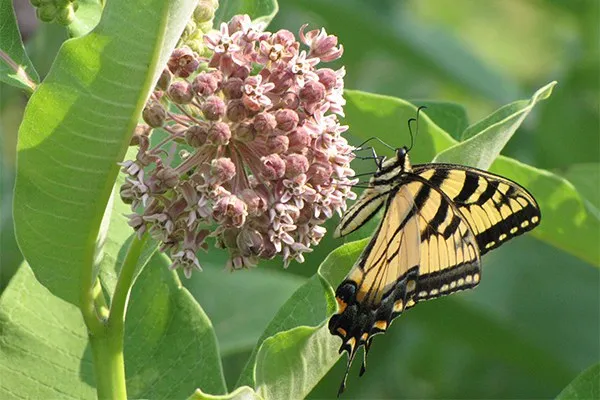Those lazy summer days can offer the perfect opportunity to learn more about what goes on in your backyard and to do some fun activities as a family!
Flower Pressing
Pressing flowers is a practice that dates back to ancient civilizations. In 16th century Japan pressed flowers were used to make large pictures known as Oshibana. As trade with Japan increased, people in Europe became fascinated with flower pressing, and it became a favorite pastime. Some people saved pressed flowers for sentimental reasons, while others kept botanical journals. Many of these pressed flower items are still in existence today. Flower pressing is a fun activity for kids. You can use the pressed flowers to make bookmarks and sun catchers, keep them in a journal, or use them for many other art projects.
To press flowers, you will need the following:
- fresh picked flowers, leaves, or other botanical materials
- a large book (or several books)
- 2 sheets of parchment paper
- weights of some kind (more books, bricks, etc.)
Instructions
- Pick your favorite flowers, leaves, or other plant material to press. Pick flowers in the morning, after the dew has dried. Wet flowers or leaves may get moldy. It is best to select flowers that are close to full bloom. Avoid any with black spots, if possible.
- Open the large book and place a piece of parchment paper on one of the pages. Arrange the flowers on parchment paper with about ¾” of space between them. Place the second sheet of parchment paper on top of the flowers.
- Close the book. Add weights on top of the book. Make sure the weights are distributed evenly.
- Wait 2-4 weeks for the flowers to dry. The thicker the flowers, the longer it takes to dry.
- You can do lots of things with these pressed flowers. Make pictures on paper with them, or use contact paper to make a bookmark or suncatcher. You can even tape them into a journal, have your children research them, and write down some interesting facts.
Observe Butterflies
Pennsylvania is home to many different types of butterflies. According to Penn State Extension, 146 documented butterfly species have been discovered so far. If you have flowers, butterflies may be frequent visitors to your backyard. A fun activity to do in the summer is to become a “Backyard Butterfly Watcher.” Have your child get a notebook, pencil, and crayons. They can observe the butterflies that land in the yard, draw a picture of them, and write down some things that they notice the butterfly doing. If your child dates the page, they can keep track of how many times they see each one. Help your child go on the Internet and look up some more facts about this pollinator that visited your yard.
Here are a few common butterflies that you may find around your home:
Eastern Tiger Swallowtail (Papilio glaucus)
The Eastern tiger swallowtail is easy to identify by its striking colors, although the male is usually bolder than the female. They have a wingspan of 3.5”-5.5”. They are solitary fliers, so you usually see them on their own.
Common Buckeye (Junonia coenia)
The common buckeye has a wingspan of 2-2.5”. Their coloring is mostly brown with orange bars, but they have three to four eyespots with blue, magenta, orange, and green shades. They are generally low fliers and prefer open spaces such as meadows.
Cabbage White (Pieris rapae)
The cabbage white has a wingspan of 1.23”-2”. Wings are greenish-white to white, with black tips and black dots on the wing. Males have one black dot on each wing, and females have two. Cabbage whites live in almost any habitat except dense forests, so you can even see them in the city. The caterpillars love to eat cabbage and kale, so they are sometimes considered pests.
Plant a Butterfly Garden
If you are looking for a project that is fun for the whole family, try planting a garden to attract butterflies and other pollinators! Butterflies and other bugs are important because 35 percent of the world’s crops depend on them to reproduce. That’s about one out of every three bites of food that you eat! Due to habitat loss, planting of non-native species, and other factors, there are not enough pollinator-friendly plants to support butterflies, bees, moths, and other insects that depend on them for food. at Beechwood Farms.
Your pollinator garden doesn’t have to be large—a few plants in a container on your patio, a hanging basket, a few plants around a tree that has bare mulch, or a small raised vegetable garden can be a huge help to these beneficial insects. Or, add a small flower garden in your yard – the pollinators will visit whatever you plant. Make sure to include native plants in your garden – they are the best for pollinators and are usually less maintenance and less prone to diseases than non-native plants.
Be sure to include your children in the planning. Research some native plants, let them help you pick them out at the nursery, and encourage them to help you plant. They can also help water them all summer long.
Not sure where to start? You can check out some of the following resources for help:
Landscaping with Native Plants, PA Department of Conservation and Natural Resources
Pennsylvania Native Plants for the Perennial Garden, Penn State Extension
List of Western PA Natives, Audubon Society of Western Pennsylvania
Summer is a great time to instill in your children a love of the outdoors. Observe some insects, plant a garden, or just go for a nature walk. Enjoy spending the time as a family!
Activity and Article Resources
Pennsylvania Department of Conservation and Natural Resources
The Natural History Museum of London
Western Reserve Historical Society
Source: Penn State Extension; Photo: Mandy L. Smith, Penn State

